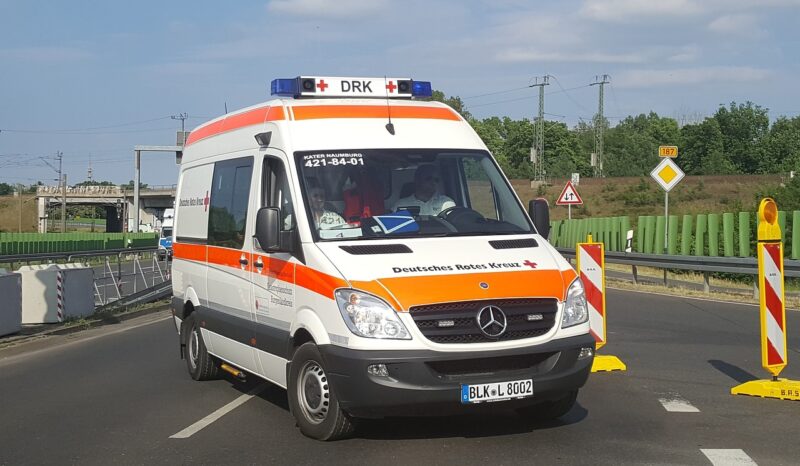Why Ambulance Services Differ Across Regions: How Funding and Equipment Affect Care
November 13, 2024

Ambulance services are a critical component of emergency medical care. Yet, if you were to look at ambulance services across different regions, you would find significant variation. This difference can impact response times, the type and quality of care provided, and ultimately the outcomes for patients needing emergency assistance. Understanding why these disparities exist can shed light on the complexities of emergency medical services (EMS) and pave the way for improvements in healthcare delivery.
1. A Snapshot of Ambulance Services in the U.S.
The United States boasts a fragmented EMS system. Services are typically operated by a variety of organizations—government, non-profit, and private entities. In fact, according to the National Association of Emergency Medical Technicians (NAEMT), there are more than 19,000 EMS agencies in the U.S. alone.
This level of fragmentation means that not all ambulance services are created equal. In some areas, paramedics are equipped with the latest technology and receive advanced training, while in others, resources are limited, resulting in inadequate equipment and training. Understanding the key factors impacting these disparities can provide insight into the functioning and effectiveness of ambulance services.
2. Funding: The Backbone of Ambulance Services
One of the most significant factors affecting ambulance services is funding. Funding sources vary widely depending on region, with some ambulance services relying heavily on contracts with local governments, while others depend on private insurance reimbursements or out-of-pocket payments from patients.
In wealthier urban areas, ambulance services may benefit from higher taxes and funding levels, leading to better-equipped vehicles, advanced medical technology, and well-compensated staff. Conversely, rural or poverty-stricken areas often struggle with budgetary constraints. They may have outdated equipment and fewer trained personnel, resulting in a lower quality of care.
Moreover, budget cuts can compromise the quality of emergency services, leading to layoffs and extended response times. Studies have shown that areas with chronic funding shortages often have longer wait times for patients and a higher incidence of inadequate patient care.
3. The Role of Equipment in Emergency Medical Services
The type and quality of equipment available to ambulance services significantly influences the level of care provided. Ambulances equipped with advanced technology, like heart monitors, ventilators, and medications, can deliver better pre-hospital care than those without such tools.
Urban ambulance services often have access to the latest medical devices and technologies because of higher funding and community investment in healthcare. In contrast, rural ambulance services may face challenges such as:
- Limited Access to Supplies: Smaller departments may struggle to afford basic medical supplies, leading to outdated medications and equipment on board, which compromises the quality of patient care.
- Aging Vehicles: Older ambulances not only require more frequent repairs but also may not meet current safety and health regulations, putting patients at further risk.
- Fewer Advanced Life Support (ALS) Capabilities: Some regions may only have Basic Life Support (BLS) services, meaning they are unable to provide the more advanced care needed for critical conditions, again resulting in poor patient outcomes.
Efforts to modernize equipment and provide training for paramedics have been found to significantly improve patient outcomes. Yet, without adequate funding, many regions remain stuck in a cycle of outdated practices and equipment.
4. Training and Staffing: A Critical Component
While equipment and funding play pivotal roles in ambulance service quality, the training of staff cannot be overlooked. Paramedics and emergency medical technicians (EMTs) are the frontline providers in emergency situations. Their training, skills, and experience can significantly influence patient outcomes.
In regions where ambulance services receive adequate funding, providers can access advanced training programs, allowing them to stay current with medical advances and best practices. These trained professionals are better equipped to deal with critical and complex cases, often providing interventions that drastically improve patient outcomes.
In contrast, services in underfunded areas may have a harder time retaining qualified staff due to lower wages, inadequate training, and unmanageable workloads. Such challenges can lead to burnout, higher turnover rates, and a detrimental impact on care quality and patient outcomes.
5. Case Studies: Examining Regional Differences
To understand why ambulance services differ across regions, it can be beneficial to examine specific case studies.
Urban Areas vs. Rural Regions:
In metropolitan areas like New York or Los Angeles, ambulance resources are typically abundant. Advanced care is readily available, leading to swift response times and effective interventions. These regions also benefit from better integration with hospitals, which can guarantee swift transitions for critically ill patients.
On the flip side, in rural areas such as some parts of Appalachia, the landscape poses its challenges: longer distances to cover, less access to advanced medical care, and fewer ambulances per capita. Basic Life Support is often the only option, severely limiting care for patients with critical conditions.
Funding Allocation Disparities:
Consider two different townships: one with access to a significant emergency services fund through local taxes, and another heavily dependent on state funding. The former may invest in technology like ECG monitors and IV pumps, while the latter may struggle to maintain basic operations, resulting in poorer patient outcomes.
6. How to Address the Disparities in Ambulance Services
Addressing the disparities in ambulance services requires a multifaceted approach. Strategies that could be pursued include:
- Increasing Funding: Advocacy for increased public funding and equitable distribution of resources to rural and underserved areas can eliminate funding disparities that exist between regions.
- Investing in Equipment: Developing programs that facilitate equipment sharing between urban and rural services can help improve care quality across regions.
- Improved Training Programs: Establishing standardized training protocols and certification processes will ensure all EMTs and paramedics can deliver high-quality care, regardless of their regional location.
- Community Engagement: Engaging communities in discussions about their healthcare needs can lead to better-aligned services that address local challenges effectively.
Conclusion
The disparities in ambulance services across different regions illuminate a complex interplay between funding, equipment, and training. It is essential to recognize these challenges in order to effectively reform and enhance emergency medical services for all communities. With increased awareness and proactive efforts at local, state, and federal levels, the goal of equitable and efficient ambulance service can become a reality, leading to improved patient outcomes and a stronger public health infrastructure.
By championing change and investing in the right resources, regions can work toward providing the best possible emergency care, regardless of their socioeconomic status. After all, everyone deserves equal access to timely and effective medical assistance when it matters most.







